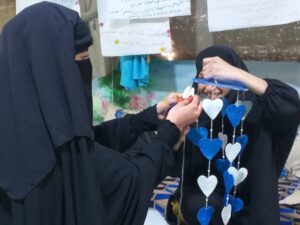Introduction
This paper aims to provide background information for discussions on Northeast Syria (NES). It focuses on social structures, local governance entities, and central changes in the area. The paper doesn’t provide accurate statistics on economic and development indicators, nor does it propose to cover all aspects of the local complexities. Names of influential and key persons have been obscured for social and security considerations.
The paper covers three main themes prevalent in the area. First is the local social structure, which provides a general map of the society and local councils, which contribute significantly to the local politics. Secondly, the paper looks into new intermediaries or new local elite. Those have played a major role in shaping the security and social context in NES in the post-ISIS era. Finally, the paper covers the local economy, which appears to be semi-active, albeit highly connected to the security situation. For instance, economic activity decreases in towns that suffer from ISIS’s influence or have tense relations with the Government of Syria (GoS).
The paper is based on data collected through twenty interviews with key persons in twenty different locations across NES between December 2019 and May 2020. In addition, the paper relies on secondary sources such as available open-source material and the accumulated knowledge of the research team.
Deir Ezzor Summary
The towns of Deir Ezzor, as well as Al-Shamiya and Al-Jazira still pose a significant challenge to the Autonomous Administration (AA). The regions are Arab tribal areas with local disputes settled by tribe members. However, jihadist organizations such as ISIS and the Al-Nusrah Front had strongholds in these areas. This duality created local dynamics that reshaped the region and deconstructed its geography, which, in turn, led to greater involvement of the Autonomous Administration in local affairs and increased its security burden.
Al-Jazeera and Al-Hasakeh Summary
The Jazira region was relatively stable in 2020. The writers of this report attribute this stability to four factors: borders, tribes, the partial presence of the regime, and the region’s diversity. Today, these four characteristics of the Jazira region will determine how effective the stability in this region of the Middle East is.
The borders with Iraq remain an essential source of the political legitimacy the Autonomous Administration needs. Through border control, the administration will achieve political gains in any future negotiations with the regime. Even though ISIS does not impose a threat anymore, borders remain the most crucial factor. As for the Arab tribes, they still pose significant challenges to the Autonomous Administration in terms of community policing, and thereby, raising the level of community representation and serving the regions of the Arab majority become of utmost importance.
The partial presence of the Assad regime sometimes hinders the Administration‘s development and security efforts. Although this presence remains limited, it can still play a disabling role. Finally, the diversity reflects the importance of the region and its local forces that work with the Autonomous Administration. It is worth noting that diversity management is still nascent.
Raqqa Rural Suburbs Summary
The suburbs of Al-Raqqa city are not connected like they were before the war. They constitute separate towns, each with an economy that varies from one village to the other. New leaderships and elites of the society that were not present in the history of the area have emerged. These dynamics reconstructed some towns and villages in Al-Raqqa countryside after SDF’s control. These newly formed dynamics effectively influence the already emerging governance system in towns.
The Al-Raqqa countryside, which relies on agriculture for the development of its local economy, does not have the same levels of production as in the past. The blocked roads between Al-Raqqa’s suburbs and the scarcity of resources are among the factors that do not aid local development over the medium term.


